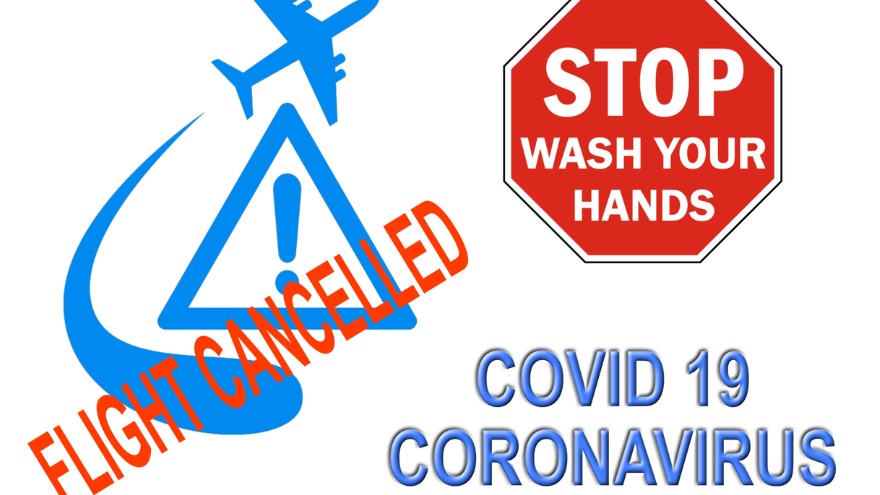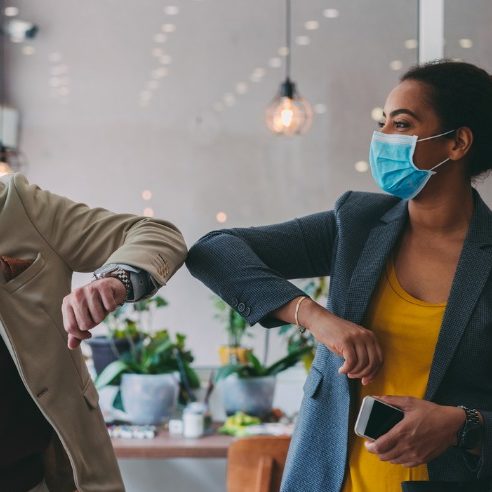How to craft a code that protects everyone
The definition of safety is always relative. During a pandemic, finding the sweet spot between strict guidelines and practical solutions is a delicate balancing act. Faced with a haze of uncertainty, the meeting planner has to make the “go” and “how to go” decisions, but the responsibility to do the right thing is shared by venue, community and guest alike.
How do you determine the right choice for your group? Experts have suggestions.
Trust, But Verify
“Start with trustworthy information,” advised Russ Simons, chief listening officer and managing partner with Venue Solutions Group. The architect of Walmart’s Black Friday crowd management plan and “retailtainment” events serves as chairman of the Department of Homeland Security Public Assembly Facility Sub-sector Group for commercial facilities. He is also a former emergency medical technician, and he compares the current situation to an accident scene. “Now we are figuring out how to move from triage to safety,” he said in mid-July.
Simons’ approach is to collect all available data at every level. He starts with mortality rates from John Hopkins University. Those numbers are more consistent than case rates, which can be subject to variations of testing and reporting. He tracks reports from the World Health Organization and Centers for Disease Control and Prevention. And he is watching the starts and stops in China and other parts of the world to learn lessons from how they handled the disease.
Then he studies the situation in the area where the event is being planned—regions vary in geography, population and culture. Some require masks and others simply suggest them, depending on the day. Simons suggested considering the specifics of the group, its history, audience and mission, and then finding a destination that supports that attitude.
As a member of the board of advisors for National Center for Spectator Sports Safety and Security, Simons suggested looking for venues that have been certified for following best practices. International Association of Venue Managers has partnered with ISSA’s Global Biorisk Advisory Council in offering GBAC STAR accreditation. Thousands of venues all over the country have signed up to document their cleaning regimens to assure planners that they are ready to welcome groups safely.
On the property level, Simons likes to tour the grounds, talk to the housekeepers, find out how the traffic will flow and how the group will be shielded from other events on site. “The goal is to create an isolation bubble,” he says.
Simons is less convinced about temperature screening. “The science on temperature checks doesn’t seem to be good,” he said, pointing to the large percentage of people with COVID-19 who don’t have an elevated temperature. “It was a logical step that seemed like a good thing to do early on, and it can help some people feel safe,” he said.
However, he cautioned that if handheld or mass thermal screening is adopted, planners need to establish a standard of care that considers what to do if the temperature is above the cut-off level, including having a nurse on site, retesting and denying entry.
A Pandemic Plan

Many meeting planners are looking to someone else to tell them the right way to plan a successful and safe event. However, as a meeting organizer and expert at your craft, you’ll deliver a better and safer experience if you have the confidence to take the lead and instruct your venue, hotel and vendors with your own individual COVID-19 contingency planning requirements.
Desi Whitney is president and co-founder of Emergency Concierge International (ECI), an all-hazards emergency planning company for meetings. Her team developed a Comprehensive COVID-19 Medical Contingency Plan. Here are highlights.
• Develop an emergency plan that includes a response to all hazards—not just COVID-19.
• Determine the local public health requirements that must be implemented.
• Check frequently for updates from local public health resources.
• Work with hotel or venue to define its guidelines.
• Be informed of the sanitization schedule; confirm that the schedule is being followed.
• Decide in advance the guidelines and boundaries you plan on implementing; communicate these to attendees.
• Develop a clear communications strategy for attendees.
• Consider your enforcement plan and decide who will be enforcing guidelines and boundaries that are agreed upon; enforce these in a comfortable way for attendees.
• Promote proper wearing of masks; all staff and attendees should be wearing the proper personal protective equipment.
• Get creative—you can put proper precautions in place without sterilizing the look and feel of your event.
Code of Conduct
“We have to stay away from absolutes,” he offered. “We can’t say anything will be 100 percent safe, only that these are the highest levels of thinking and best practices to keep as safe as possible.” One reason for the uncertainty is the behavior of attendees. “They have a responsibility to wash their hands and wear masks,” he said.
Event Industry Council’s APEX Task Force released an Accepted Practices Guide at the end of July that included a model Code of Conduct outlining personal actions that support the collective well-being. Suggestions for attendees include staying home if you feel sick and notifying the event organizer if you test positive shortly after returning home.
Get the Word Out
IAEE’s Health and Safety Task Force developed an Essential Considerations for Reopening Exhibitions and Events document to help planners put together their plan. One of the essentials? Awareness.
“Communication on COVID-19 protocols should be easy to understand and include as much information as possible shared via multiple channels (e.g., event website, event mobile app, posters, infographics, physical media, email communications, communications from leadership, etc.),” the document stated. In addition to general information about etiquette and rules, establishing the ability for a staff “knowledge expert” to send text messages in case of an emergency could be the new reality.
Some Good News
“There is good news,” Simons reported, referring to a map of emerging hot spots. “There has never been an issue where more people are working on it simultaneously,” he said, referring to the global race to develop a vaccine and the focus in the meetings world on writing protocols.
This optimism is from a man whose son had a serious case of COVID-19. Even though he didn’t have to be hospitalized, Simons described the experience as “sobering” and quarantined himself as a precaution.
There will not be a date and time when it is suddenly safe, he cautioned. “We are simply tasked with creating a level of trust where people are comfortable going to a meeting.”




